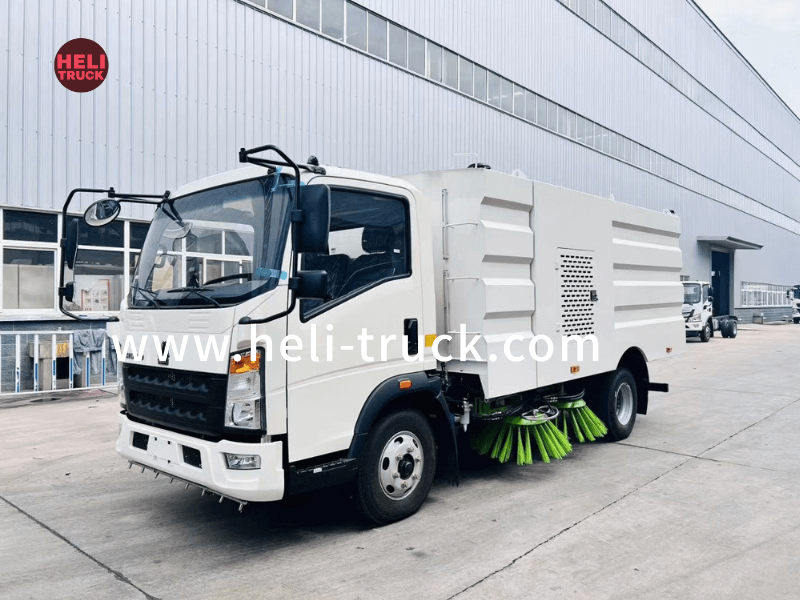Troubleshooting Guide for Garbage Compactor Trucks

Introduction
Garbage compactor trucks are an essential part of waste management systems in cities and municipalities around the world. These specialized vehicles are designed to collect, compact, and transport large volumes of solid waste efficiently. However, like any complex machinery, garbage compactor trucks can experience technical issues and breakdowns that can disrupt waste collection schedules and impact overall operations. In this comprehensive troubleshooting guide, we will explore common problems that garbage compactor trucks may encounter, diagnostic techniques to identify the root cause of these issues, and practical solutions to resolve them effectively.
Understanding Garbage Compactor Trucks
Before delving into troubleshooting procedures, it is important to have a basic understanding of how garbage compactor trucks operate. These vehicles typically consist of a chassis, a hydraulic compactor system, a waste collection hopper, and a storage container for compacted waste. The compaction mechanism is powered by a hydraulic system that applies pressure to compress the waste, reducing its volume and increasing the truck's capacity to carry more garbage.
Common Issues and Troubleshooting Steps
1. Hydraulic System Failure
Symptoms: Unusual noises, slow or erratic operation of the compaction mechanism, hydraulic fluid leaks.
Diagnostic Steps:
- Check hydraulic fluid levels and quality.
- Inspect hydraulic hoses and connections for leaks or damage.
- Test hydraulic pump and motor for proper function.
- Monitor pressure gauges for abnormalities during operation.
2. Electrical System Malfunction
Symptoms: Inoperative controls, intermittent power loss, flickering lights.
Diagnostic Steps:
- Test battery voltage and connections.
- Inspect wiring harness for damage or loose connections.
- Check fuses and relays for continuity.
- Use a multimeter to troubleshoot electrical components.
3. Compactor Jamming
Symptoms: Compactor blade stuck or unable to move, unusual resistance during compaction.
Diagnostic Steps:
- Clear any obstructions in the waste hopper.
- Inspect the compactor blade for damage or misalignment.
- Lubricate moving parts to reduce friction.
- Check hydraulic pressure and adjust as needed.
4. Hydraulic Cylinder Issues
Symptoms: Slow or uneven movement of the compactor blade, hydraulic fluid leaks around the cylinders.
Diagnostic Steps:
- Inspect hydraulic cylinders for signs of wear or damage.
- Check cylinder seals for leaks and replace if necessary.
- Test cylinder operation under load to identify performance issues.
- Adjust hydraulic pressure and flow rate to optimize cylinder function.
5. Overheating Problems
Symptoms: Elevated hydraulic fluid temperature, burning smell, decreased system efficiency.
Diagnostic Steps:
- Check hydraulic fluid levels and quality.

- Clean or replace hydraulic filters to improve fluid circulation.
- Inspect cooling system components such as radiators and fans.
- Monitor system temperature during operation and adjust workload as needed.
6. Safety System Malfunctions
Symptoms: Emergency stop failures, warning alarms not functioning, safety interlocks not engaging.
Diagnostic Steps:
- Test emergency stop buttons for proper operation.
- Inspect safety sensors and switches for damage or misalignment.
- Check control panel displays for error codes or warnings.
- Verify that safety interlocks are functional before operating the compactor.
7. Unbalanced Loading
Symptoms: Uneven compaction, overloading on one side, increased wear on compactor components.
Diagnostic Steps:
- Educate operators on proper loading techniques.
- Implement weight distribution guidelines for waste collection.
- Monitor load balance during compaction cycles.
- Adjust compaction settings to optimize load distribution.
Conclusion
Garbage compactor trucks play a crucial role in maintaining cleanliness and sanitation in urban environments. By understanding more.. that these vehicles may face and following systematic troubleshooting procedures, operators and maintenance personnel can ensure the efficient operation of compactor trucks and minimize downtime. Regular inspection, preventive maintenance, and prompt resolution of technical problems are key to maximizing the lifespan and performance of garbage compactor trucks. With the insights provided in this troubleshooting guide, waste management professionals can address issues proactively and keep their fleet of compactor trucks running smoothly to meet the demands of waste collection services.
